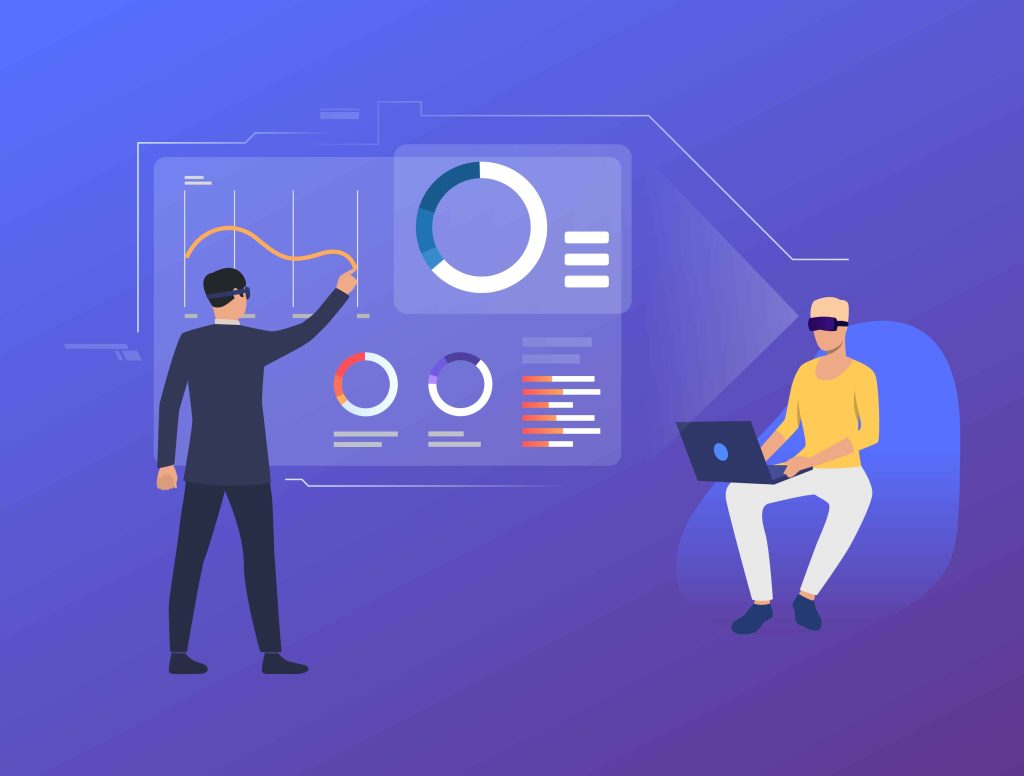Posted by Keyss
How Predictive Analytics Is Transforming Business Decisions in 2025
In 2025, predictive analytics has evolved from a futuristic concept into a business essential. Across industries — from finance and healthcare to eCommerce and logistics — organizations are leveraging predictive models to make faster, smarter, and more profitable decisions.
By analyzing past data and using AI-driven forecasting, predictive analytics helps businesses anticipate trends, reduce risks, and seize opportunities before competitors even notice them.
In an era where every decision counts, predictive analytics empowers leaders with foresight — not hindsight.
What Is Predictive Analytics?
Predictive analytics uses statistical algorithms, data mining, and machine learning techniques to identify future outcomes based on historical data.
In simpler terms, it allows businesses to answer questions like:
What will my customers want next month?
Which products are likely to perform best in Q4?
How can I prevent customer churn or operational failures before they happen?
By turning raw data into actionable intelligence, predictive analytics transforms uncertainty into opportunity.
Why Predictive Analytics Matters in 2025
The modern marketplace is data-driven and hyper-competitive. Businesses can’t afford to rely on guesswork or outdated reports. Predictive analytics enables:
Proactive Decision-Making – Identify patterns and trends before they impact operations.
Cost Reduction – Minimize waste, downtime, and inefficiencies through predictive modeling.
Enhanced Customer Experience – Personalize products, offers, and services based on forecasted needs.
Risk Management – Anticipate fraud, market volatility, and equipment failures before they happen.
Revenue Growth – Optimize pricing, marketing campaigns, and product strategies through accurate forecasting.
In 2025, predictive analytics is no longer a competitive advantage — it’s a requirement for sustainable growth.
Key Technologies Powering Predictive Analytics
Predictive analytics relies on a blend of advanced technologies:
Artificial Intelligence (AI): Automates insights extraction and improves accuracy over time.
Machine Learning (ML): Continuously refines models using new data and behavioral trends.
Big Data Analytics: Processes massive datasets in real time for immediate decision-making.
Data Visualization Tools: Translate complex analytics into user-friendly dashboards.
Cloud Computing: Provides scalable and secure infrastructure for data storage and processing.
Together, these technologies form the foundation for intelligent, future-ready business systems.
Real-World Applications of Predictive Analytics
Predictive analytics is transforming how organizations operate across industries:
Retail & eCommerce: Forecast demand, prevent stockouts, and optimize pricing in real time.
Healthcare: Predict disease outbreaks, improve patient care, and optimize resource allocation.
Finance: Detect fraud, assess credit risk, and optimize investment portfolios.
Manufacturing: Implement predictive maintenance to reduce equipment downtime.
Marketing: Identify high-value leads, segment audiences, and personalize campaigns for maximum ROI.
The ability to predict outcomes with accuracy helps businesses move from reactive to proactive strategies.
How Predictive Analytics Improves Decision-Making
Data-backed forecasting gives organizations a significant edge. Here’s how it enhances decisions:
Smarter Strategic Planning – Leaders base plans on statistical probabilities, not intuition.
Faster Response Time – Real-time dashboards alert teams before issues escalate.
Better Resource Allocation – Predictive models identify where to invest time and capital.
Improved Operational Efficiency – Anticipating demand avoids costly overproduction or shortages.
Enhanced Customer Retention – Predict churn patterns and intervene before customers leave.
Predictive analytics ensures that every business decision is informed, precise, and results-driven.
Challenges and Solutions in Predictive Analytics
Despite its potential, predictive analytics comes with challenges — but each has a clear solution:
Data Quality Issues: Poor data equals poor predictions. → Implement automated data cleaning and validation.
Integration Complexity: Legacy systems often hinder analytics adoption. → Use API-driven, cloud-based platforms.
Talent Shortage: Skilled data scientists are in demand. → Partner with analytics service providers for expertise.
Privacy Concerns: Handling sensitive data requires compliance. → Adopt GDPR and HIPAA-compliant practices.
Overcoming these challenges allows businesses to unlock the full value of predictive analytics safely and effectively.
Predictive Analytics and AI: A Perfect Partnership
AI amplifies predictive analytics by automating model training, detecting hidden correlations, and learning from data at scale.
In 2025, AI-powered predictive analytics systems can:
Detect early signs of customer churn with over 90% accuracy.
Predict equipment failure days before it happens.
Forecast market demand shifts using millions of data points per minute.
This powerful synergy ensures that decisions are both data-driven and adaptive to changing trends.
The Future of Predictive Analytics
The future of predictive analytics is real-time, explainable, and democratized.
Real-time analytics will let companies act instantly on live data.
Explainable AI will make model predictions transparent and trustworthy.
Self-service tools will empower non-technical users to create and interpret forecasts easily.
By 2030, predictive analytics will not only predict outcomes — it will prescribe the best course of action automatically.
Conclusion
In 2025, businesses that rely solely on traditional reporting are falling behind. Predictive analytics gives companies the ability to anticipate challenges, seize opportunities, and make decisions with confidence.
Whether you’re optimizing sales, improving operations, or personalizing customer experiences, predictive analytics turns your data into your most valuable strategic asset.
The future belongs to those who don’t just react — but predict.

